Travel to Cambodia to experience a slice of intoxicating history, meet the incredibly friendly Khmer people, and take in the country’s breathtaking natural beauty.
[rpi]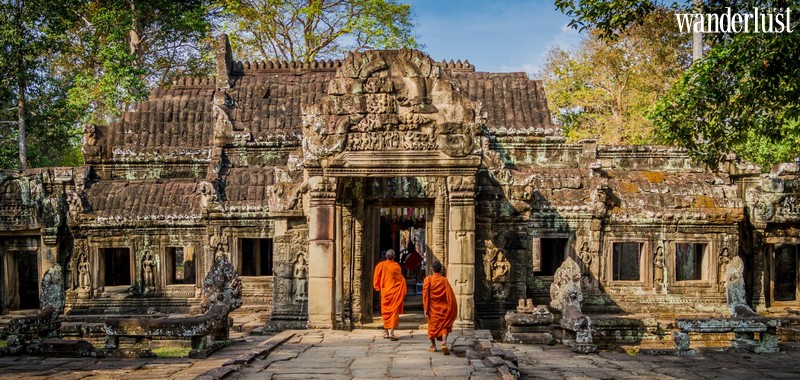
Cambodia, or the Kingdom of Cambodia, is located in the Indochinese peninsula, between Vietnam (to the East), Laos (to the North), and Thailand (to the West). The country occupies 181,035 km2 and has a coastline on its southern part of 443 km on the Gulf of Thailand. Cambodia has a population of more than 14.7 million inhabitants divided into three major ethnic groups. The vast majority of the Cambodian population is of Khmer origin with 87% of the total population (a large number of Khmer people are of Chinese or Vietnamese origin).
The powerful Khmer empire once ruled Cambodia (along with contemporary Laos, Thailand, and Vietnam). Remnants from those days can be found scattered throughout the country in the form of ancient monuments, most notably the temples of Angkor. However, Cambodian travel isn’t solely about the past. The country’s capital city of Phnom Penh is bustling, noisy, and seductively chaotic, bursting with quality restaurants and lively nightlife.
BEST TIME TO GO
Figuring out the best time to travel to Cambodia depends on what you plan to do when you arrive. Cambodia is warm all year round, but it has a rainy season too.

If you visit Cambodia between March and May, the temperatures and humidity are higher. Visiting at this time can still be a good choice if you are hitting the coast. If you are traveling to Cambodia to explore the temples, the season between November and February is cool enough for sightseeing. December and January can be the most popular time for tourists.
Travel Cambodia in the rainy season, and you’ll find the countryside at its lushest. Traveling around Cambodia during this season can present some practical challenges and flooding is commonplace. However, the mornings are usually dry as the rain mainly falls in the afternoon. If you do choose to visit the country in the rainy season, you’ll avoid the crowds too.
WHERE TO STAY IN CAMBODIA
Some of the best hotels in Phnom Penh
The Raffles Hotel Le Royal in Phnom Penh’s grand dame, a colonial beauty with slick, Art-Deco interiors, haute cuisine, elegant, lively bars, two swimming pools, the scent of frangipani everywhere, and exceptional service.
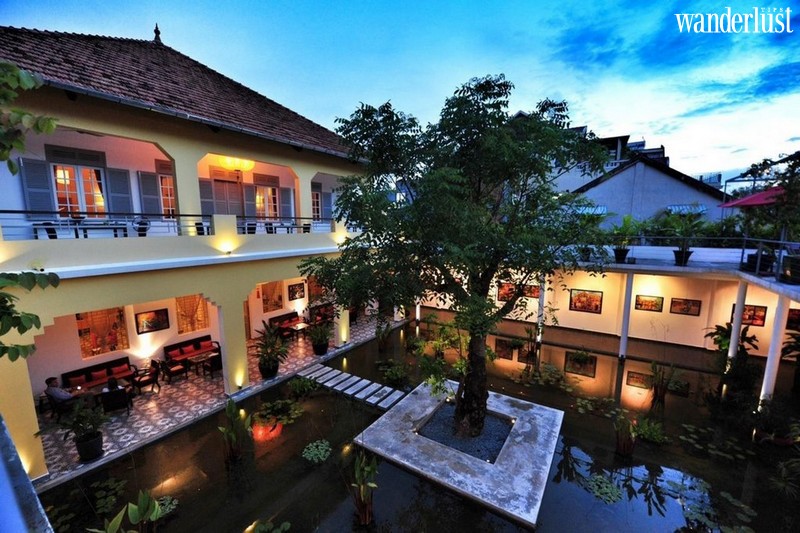
It might surprise you that with 70 rooms The Plantation is one of the largest hotels in Phnom Penh. Its rooms are generously proportioned, though, and housed in a combination of colonial-era and Khmer style low-rise villas. The pool is one of the best in town, and they have a spa. Location-wise it’s hard to beat: just behind the Royal Palace.
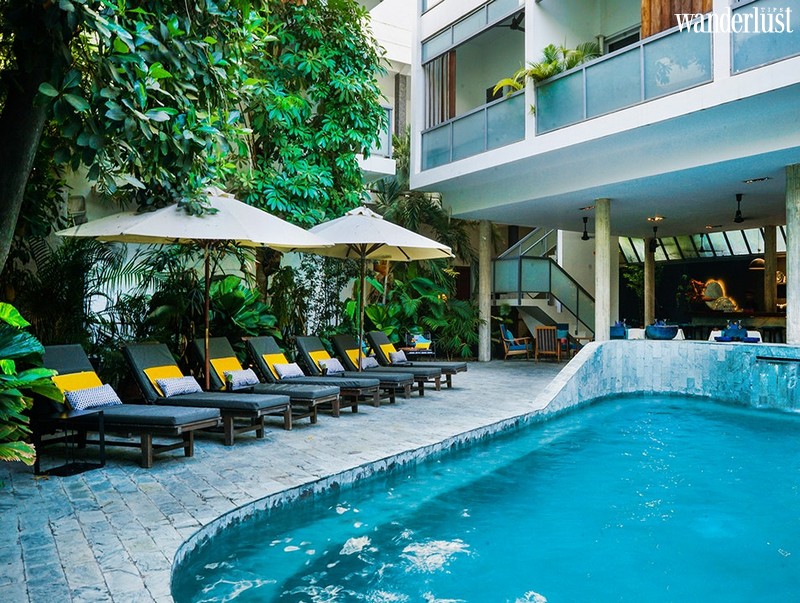
The Rambutan Resort is a wonderfully revamped 1960s villa with 19 rooms in trendy Beung Keng Kang I. There’s a pool surrounded by tropical gardens, a spa, a reputable restaurant, a fun, and friendly vibe, and some great contemporary art on the walls.
For ancient Cambodia treasures
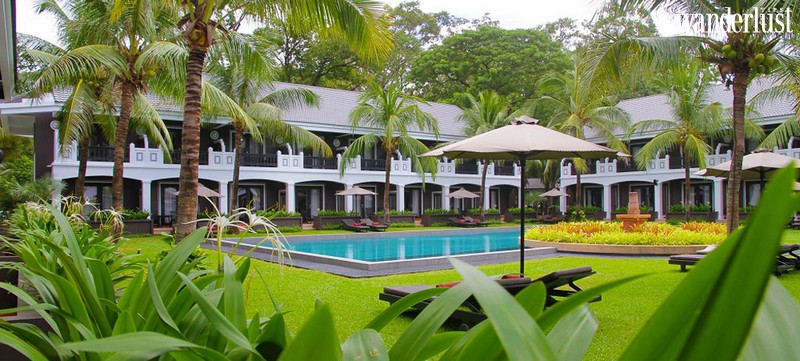
The Shinta Mani Shack is only seven kilometers away from Angkor Wat and makes for a very easy stay if you want to temple hop to your heart’s content. There are 75 colonial-themed rooms, a really striking pool, and a spa.
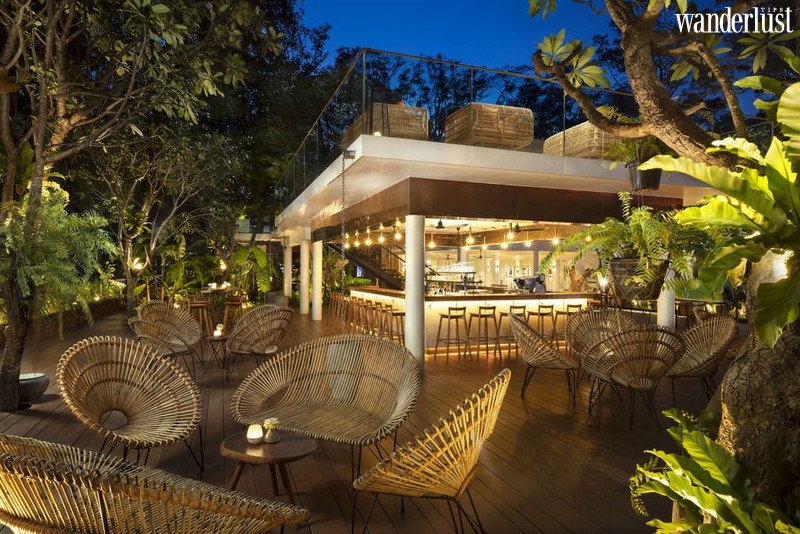
The FCC Angkor is a grand affair, formerly the residence of the governor under French rule, and now a chic, 31 room hotel. There are some beautiful traditional remnants in the large rooms with their floor-to-ceiling windows and private balconies, but there’s also all the mod. cons. and some great modern art.
For families
If you’re traveling to Siem Reap with your kids in tow you’ll need somewhere for them to relax after their jungle treks to ancient temples, and the Victoria Angkor Resort and Spa offers just what they need, a huge pool and landscaped gardens — with a crocodile pool! And there’s a cooking school and other activities, and a Cambodian and French menu.
For great value family accommodation in Siem Reap consider La Niche D’Angkor, a simple, modern hotel with 36 rooms that range in size through to triples. As well as a big pool in a jungle setting, this hotel serves Western as well as Cambodian dishes and offers complimentary babysitting.
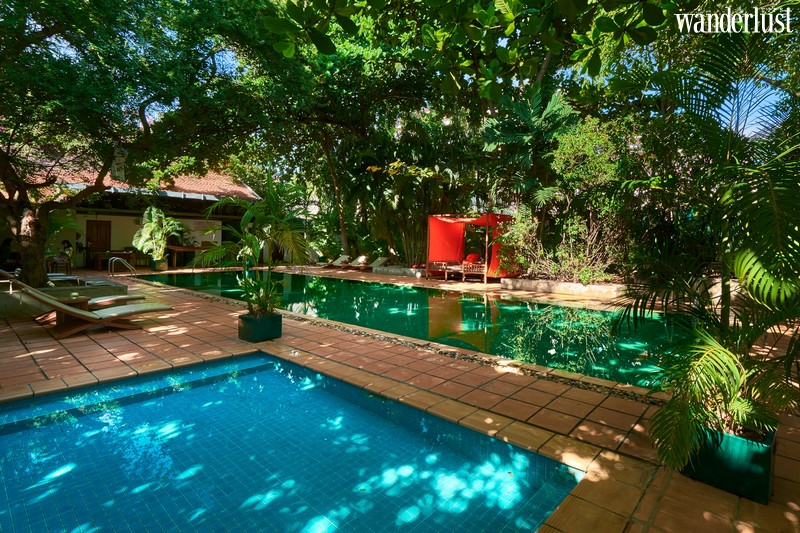
Families traveling to Phnom Penh might like The Kabiki, a haven of child-friendly happiness located on the same street as the Cambodian Prime Minister’s house. There are 18 simple rooms and suites, a children’s pool as well as a pool, a well-fenced garden for playing, and children’s organized activities.
HOW TO GET AROUND CAMBODIA
Buses and minibusses – The easiest and cheapest way to travel around Cambodia is by bus. A bus will take you everywhere and anywhere you want to go, no matter how far. The backpacker trail is so worn that there is a very well-established tourist bus system to take you anywhere. Cambodia’s bus network in particular has improved quite a bit in recent years. Phnom Penh, Siem Reap, and Sihanoukville are the main hubs. Bus rides from Phnom Penh to Siem Reap start at 10 USD one way, while ones from Phnom Penh to Sihanoukville start from 10 USD. Other routes, like Siem Reap to Sihanoukville, are a bit pricier at 15 USD one way and can go up as high as 35 USD.
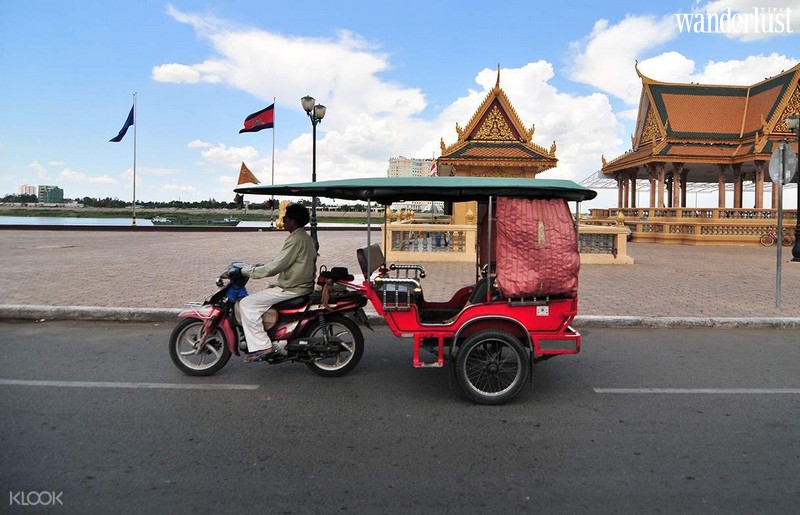
Taxis and tuk-tuks – Tuk-tuks (small shared taxis with no meter) will require a bit of haggling and cost more than local transportation. Taxis and tuk-tuks are normally double to triple what the local transportation is and you often have to haggle for the price. Shared taxis for long-distance travel is a good idea if you have a group of 3-4 people.
Trains – There’s one train that runs between Poipet to Phnom Penh every second day, with stops in Battambang Pursat. Tickets cost $5-7.
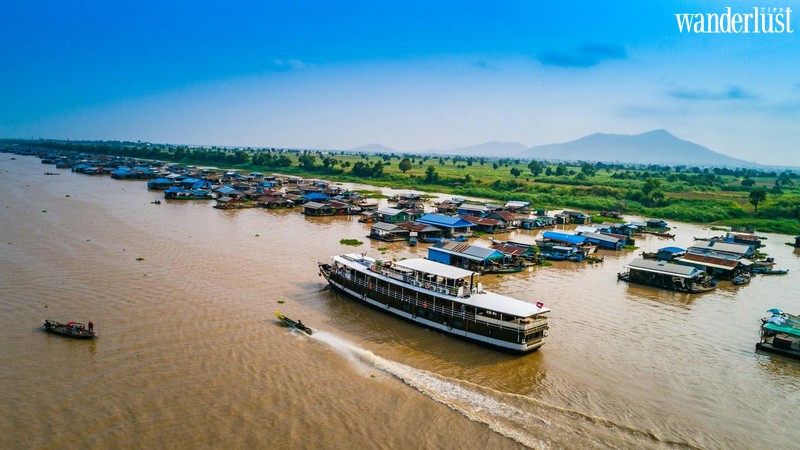
Boat – You can take a boat between Phnom Penh and Siem Reap, and Siem Reap and Battambang. This isn’t the most efficient or cost-effective way to travel, however. That being said, the 6-hour ferry ride from Siem Reap to Phnom Penh starts at just $7 USD, and $6 USD between Siem Reap and Battambang and is super scenic.
WHERE TO GO
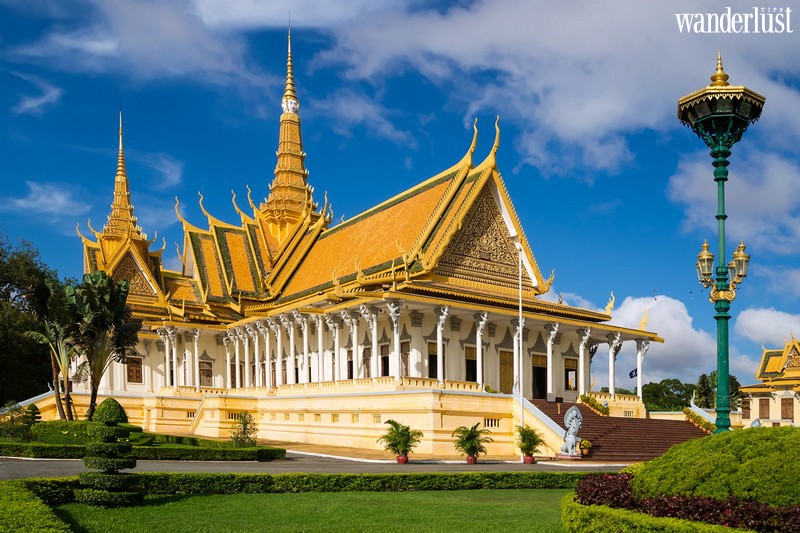
The Royal Palace in Phnom Penh
The Royal Palace and Silver Pagoda in Phnom Penh are the city’s finest examples of twentieth-century Khmer-influenced architecture. The Royal Palace is set back from the riverbank on Sothearos Boulevard. You can stroll through this complex of regal structures and perfectly manicured grounds. While there, you will gain an insight into Cambodia’s past and present. A blue flag flies when the King is in residence. While the palace itself is off-limits, it’s possible to visit several buildings within the grounds. The Silver Pagoda is named for its floor which is covered in gleaming silver.
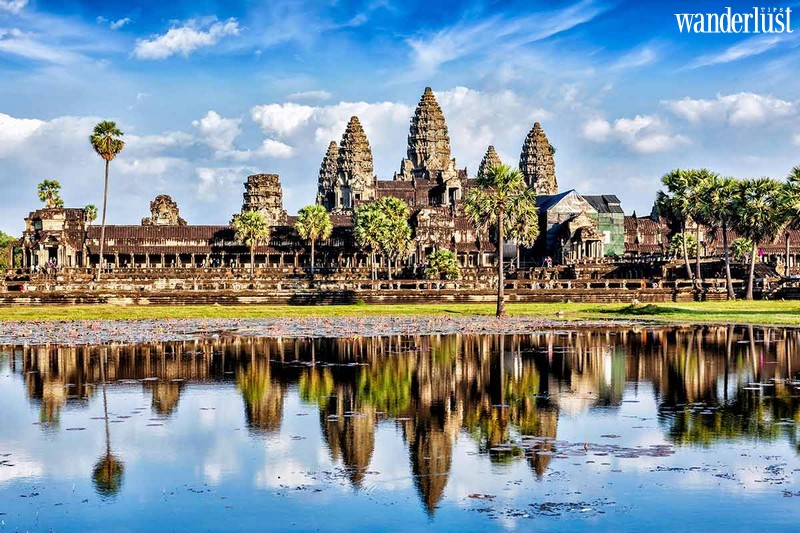
Temples of Angkor
The Temples of Angkor are world-renowned and house some of the country’s finest monuments. More than one hundred Angkorian monuments lie spread over some 3000 square kilometers of the countryside. The best-known monuments are the vast temple of Angkor Wat and the walled city of Angkor Thom. During the Angkorian period, the ruling god-kings built imposing temples as a way of asserting their divinity. They left a legacy of more than one hundred temples constructed between the ninth and fifteenth centuries. The full magnificence of Angkor Wat represents the height of Khmer art. The pretty tenth-century temple of Banteay Srei is unique, made from unusual pink sandstone and with intricate ornamentation.
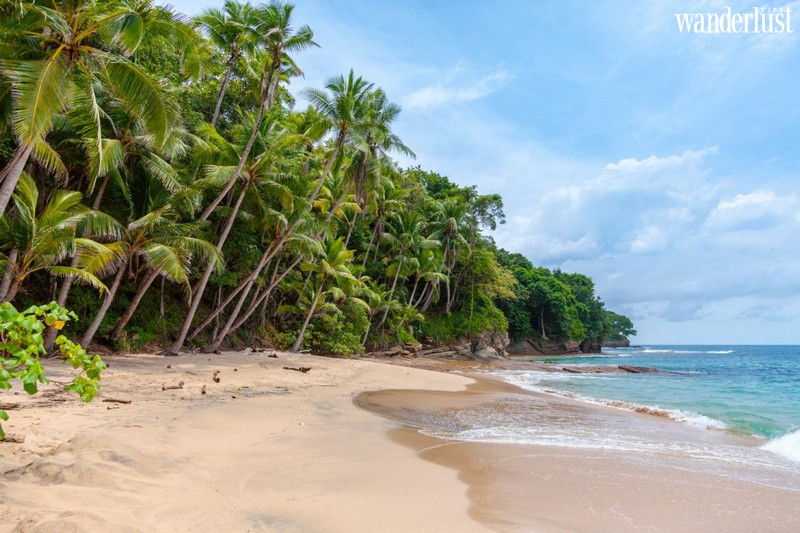
Koh Ta Kiev
Peaceful Koh Ta Kiev is one of the southern islands, and it’s a tropical paradise retaining a real castaway vibe. There are several types of accommodation to choose from, and you can even camp or sleep in a hammock between two trees over the sand. There is limited electricity on the island and no wifi. Spend your days’ jungle trekking, snorkeling, or experiencing authentic Khmer cooking.
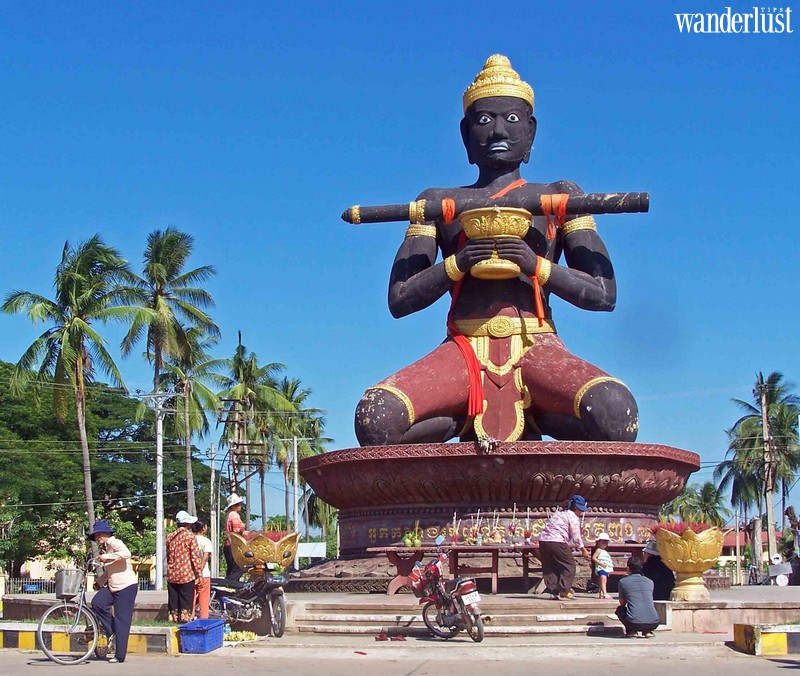
Battambang
Battambang is Cambodia’s second-largest city, but it’s often overlooked. It’s a bustling city that is both welcoming and laidback. Its lush surrounding countryside is ideal for bike rides, and it’s easy to get out on the water by kayak. You can whizz past rice paddies and rattle over bridges when you ride the quirky bamboo railway too.
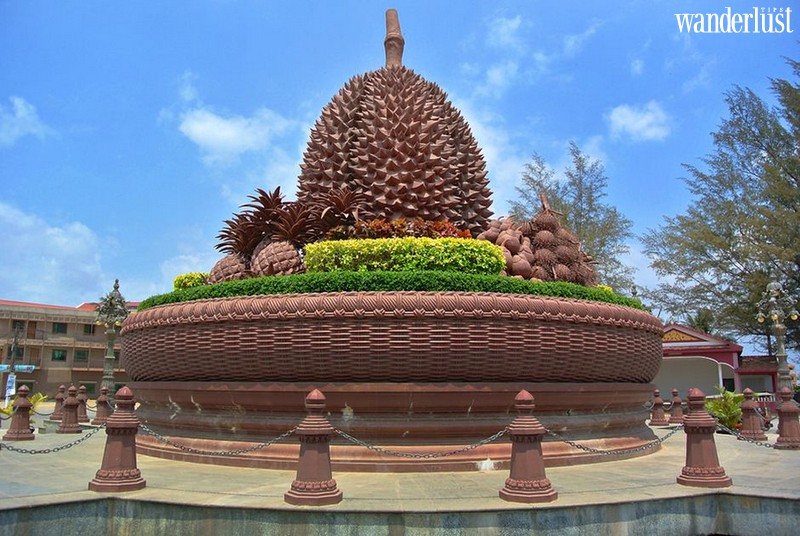
Kampot
The riverside Kampot is one of Cambodia’s most appealing towns with the backdrop of the misty Bokor Mountains. At Kampot, you can potter along the river for a swim or sunset cruise. You could also head into the mountains to explore caves. Kampot is also a base from which to explore the region’s famed pepper plantations. Bokor National Park is home to an abandoned 1920s hotel and casino. Kampot has a friendly but low-key nightlife.
WHAT TO EAT
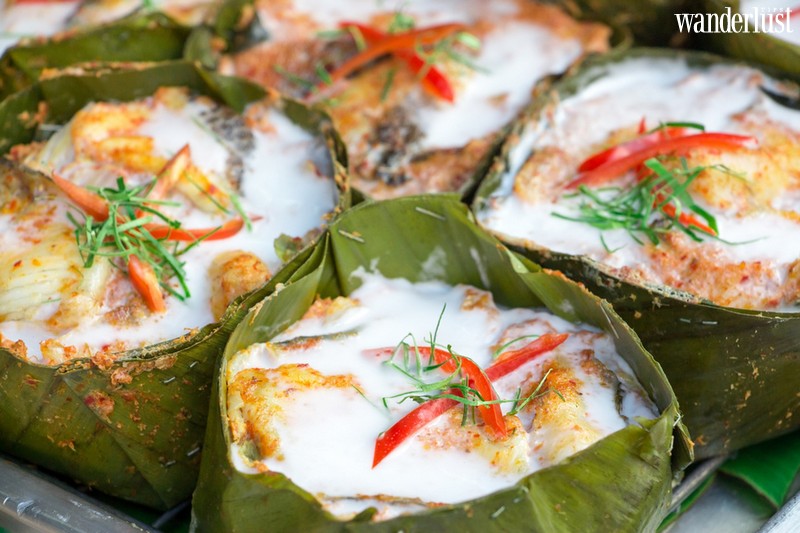
Fish amok
Fish amok is held in esteem as Cambodia’s signature dish, and the creamy curry can be found in abundance on menus in tourist hubs. Diced fillets of freshwater fish are smothered in coconut milk, eggs, fish sauce, and palm sugar. Kroeung — a paste made from pounded spices and other ingredients, such as turmeric, kaffir lime, lemongrass, and shallots — is also added. The traditional way to cook the dish is by steaming it in a banana leaf shaped into a bowl, within which it is served.
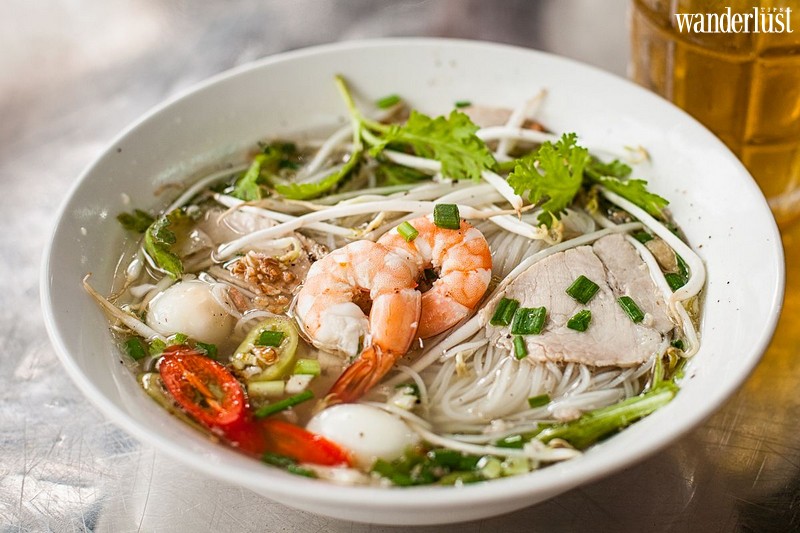
Kuy teav
This popular street food dish is how most Cambodians start the day. Kuy teav — or noodle soup — is made from pork or beef bones and rice vermicelli. The flavorsome broth is topped with fried shallots and garlic, bean sprouts, green onion, and aromatic herbs. Pork or fish balls are added. Sides include chili paste, half a lime, and hoisin sauce.
Beef loc lac
Also seen as a signature dish, beef loc lac consists of stir-fried strips of tender beef served atop a bed of lettuce leaves, sliced tomatoes, cucumbers, and rings of raw onions. Often, a fried egg is placed on top. The prize to this dish is the dipping sauce of lime juice and pepper — make it Kampot pepper to make the flavors truly pop.
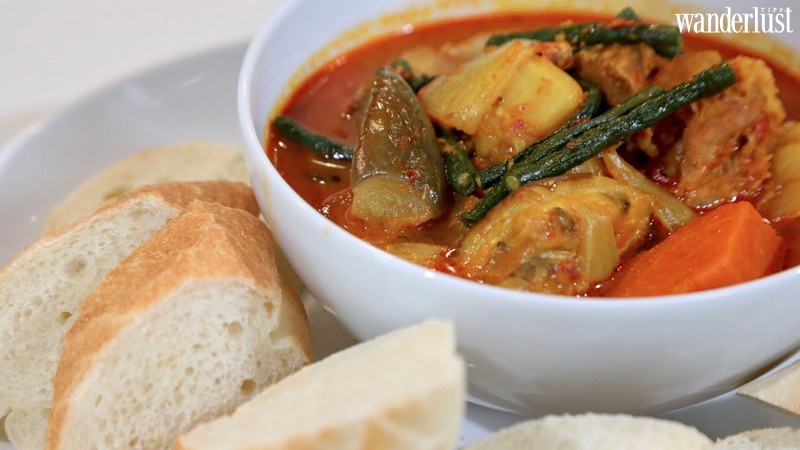
Khmer curry
Milder and much less spicy than the curries found in Thailand and India, Khmer curries tend to use more herbs than spices and are milder and sweeter in taste. While recipes vary, the curry normally features chicken, coconut cream, and milk; fish sauce; herbs and diced sweet potatoes; garlic; shallots; turmeric and ginger. It is accompanied by rice or a baguette.
Nom Banh chok
This is one of the most common street foods and is readily available across Cambodia. Made of thin rice noodles, shredded banana leaves, beansprouts, cucumber, mint, and basil, topped with green fish curry, it is often made and sold by women balancing a pole on their shoulders containing the ingredients on either side.
WHAT TO DO
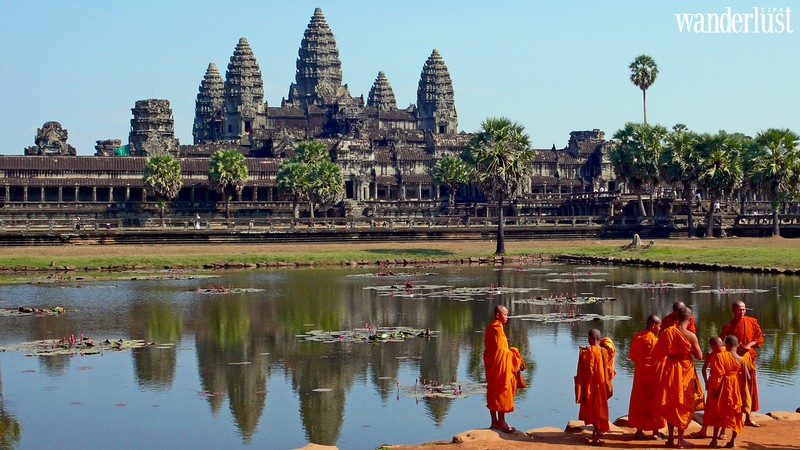
Explore the temples at the Angkor Archeological Park
No trip to Cambodia is complete without visiting the Angkor Archeological Park, which is home to the ruins of over a thousand temples. The sheer size of the area will require at least three days from visitors who want to explore each and every structure there. However, if time will not permit you to visit all of these, make sure to dedicate at least a day to explore the main structures there: Angkor Wat, Bayon Temple, and Ta Prohm.
Angkor Wat is the crowning glory of Cambodia, so much so that it appears on the country’s flag, which is why a visit here should not be missed. The temple provides hints of the Buddhist and Hindu history of the country, as evidenced by the magnificent bas-relief walls depicting various scenes there, which include the levels of heaven and hell, and even scenes from the Hindu epics Ramayana and Mahabharata.
Biking – Explore Siem Reapon a bike
Considering that the country is all about lush greenery, pristine temples in Cambodia, and a quiet, relaxed atmosphere, travelers like to keep it that way when they’re exploring it. Cycling tours are thus a convenient way of sightseeing and one of the most popular things to do in Cambodia for backpackers. Riding through quiet trails of the countryside amidst breathtaking natural scenery lets travelers escape the crowd and busy roads These tours typically include sightseeing of Ta Prohm, Elephant Terrace, Bayon, and other prominent Angkor temples. Exploring this wonderful country on a bike is one of the cool things to do in Cambodia.
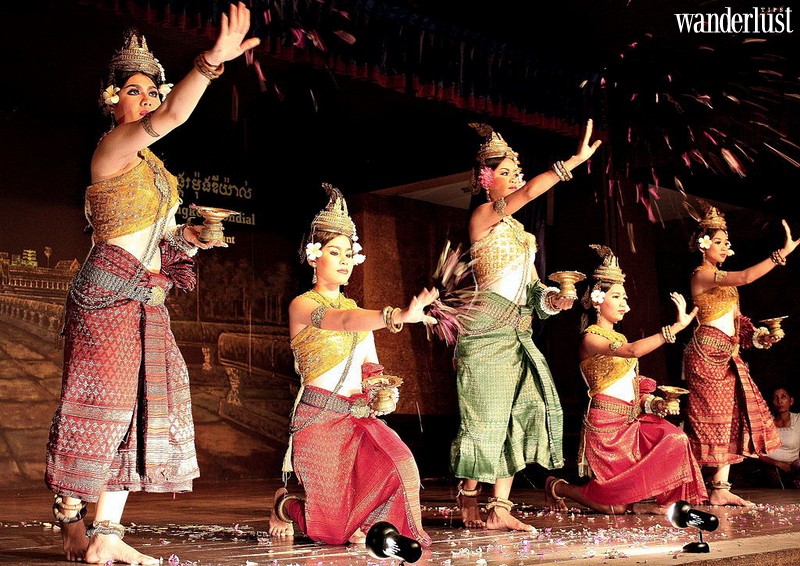
Apsara Dance – Witness the Khmer performance
For lovers of art, theatrics, & dance, the Apsara Show, or the traditional Khmer performance, is one of the best things to do in Cambodia. This cultural dance form draws its roots from the mythological courts of kings and Gods, from where it has developed into its modern, unique form that we see today. The Khmer dance revolves around a storyline which it narrates through the attractive, flexible movements of the performers and their colorful, eye-catching attires, which is why it is among the top things to do in Cambodia.
Cruising – Spot dolphins and enjoy the sunset
Cruising the Mekong is one of the most exhilarating experiences for travelers visiting here. Sailing from Phnom Penh to Siem Reap on a traditional Cambodian boat is one of the most enriching and fun things to do in Cambodia. Other than the relaxing journey, the stunning views of the sunset that one can witness from aboard the cruise are like a cherry on the cake! On the journey, one can also easily spot the Irrawaddy river dolphins in the water, the rarest of all aquatic mammals. Observing these peaceful, friendly creatures in their natural habitat is undoubtedly among the refreshing things to do in Phnom Penh.
Wanderlust Tips

